
Thin slice through the cosmic large-scale structure in the largest simulation of the IllustrisTNG project. Shown is a projection of the baryonic density field, where image brightness indicates the projected mass density and color hue visualizes the mean projected gas temperature. The displayed region extends by about 1.2 billion lightyears from left to right. The underlying calculation TNG300 shown here is the presently largest magneto-hydrodynamic simulation of galaxy formation, containing more than 30 billion resolution elements. Credit: © IllustrisTNG Collaboration
Astrophysicists from Heidelberg, Garching, and the USA present the thus far largest and most detailed calculations of the formation and evolution of galaxies. In their “IllustrisTNG” project, the researchers, for the first time, used hydrodynamic simulations to visualize the large-scale structure of galaxies. They also found out that the central black holes within large galaxies hinder star formation. And they obtained important insights into the hierarchical structure of galaxies. Their findings suggest that small systems should merge into ever larger objects over billions of years.
Galaxies like our Milky Way are islands of stars that typically contain several hundred billion suns and at least a comparable number of planets. Gas and dust clouds permeate the space between the stars and are constantly stirred up by supernova explosions and radiation outbursts of supermassive black holes in active galactic nuclei. Most of the matter is however contained in a puzzling invisible component, the dark matter, which holds the galaxies together as some kind of cosmic glue. On still larger scales, galaxies are observed to be ordered in a delicately knit “cosmic web.” How these complex entities and their intricate spatial arrangement has formed out of the hot matter and radiation soup left behind by the Big Bang is one of the most difficult problems in astrophysics.
Time evolution of the cosmic magnetic field strength.
Scientists at the Heidelberg Institute for Theoretical Studies (HITS), together with an international team of researchers at the Max Planck Institutes for Astronomy in Heidelberg and for Astrophysics in Garching, as well as scientists at Harvard University and MIT, have now managed to make a decisive step forward. Based on previous successes with the “Illustris”-simulation, they developed a new simulation model for the evolution of the universe which accounts for the physics of galaxy formation in a considerably more complete and accurate way than previous calculations. With the advanced moving-mesh code AREPO the team custom-designed for the purpose, the researchers could efficiently utilize one of the world’s most powerful supercomputers, the “Hazel-Hen” machine at the High Performance Computing Center Stuttgart, for computing the largest and most successful simulations of the emergence of cosmic structures to date. More than 24000 cores slaved away for many months in computing the formation of millions of galaxies in a representative region of the universe about one billion light years across. For the first time, physical processes such as the amplification of cosmic magnetic fields, the production of heavy elements such as magnesium and europium in supernova explosions of different type, or the injection of kinetic energy through gas expulsions from black holes were accounted for in the simulation. Computing time awarded by the German Gauss Center for Supercomputing allowed the team to realize two main simulations, TNG100 and TNG300, which redefine the state of the art in this field.
The first results of this “IllustrisTNG” project (The Next Generation Illustris) show a spectacular breadth of new theoretical predictions that enthuse the participating scientists. Within a few months, they have already written more than a dozen scientific papers and submitted them for publication. Among them, three of the first foundational studies have just appeared simultaneously in the journal Monthly Notices of the Royal Astronomical Society.

Rendering of the gas velocity in a thin slice of 100 physical kiloparsecs (in the viewing direction), centered on the second most massive galaxy cluster in the TNG100 calculation. Where the image is black, the gas is hardly moving, while white regions have velocities that exceed 1000 km/s. The image contrasts the gas motions in cosmic filaments against the fireball of motions triggered by the deep gravitational potential well and the supermassive black hole sitting at its center. Credit: © IllustrisTNG Collaboration
One of the works is concerned with the predicted large-scale structure of galaxies, which could be studied for the first time with hydrodynamical simulations of this type thanks to their now large enough volume. They form a cosmic web (Figure 1) composed of gas and stars, and feature galaxies at its intersections which not only match the shapes and sizes of real galaxies very well, but also reproduce the observed spatial clustering pattern as seen in the newest data of large galaxy surveys, and this match even persists when the galaxies are separated into different subsamples according to color and stellar mass. Additionally, the simulations make precise forecasts about how the cosmic web as traced by galaxies evolves in time, and how it is related to the underlying backbone of cosmic structure made up by the dark matter. “It is particularly fascinating that we can accurately predict the influence of supermassive black holes on the distribution of dark matter on large scales,“ says principal investigator Prof. Volker Springel (HITS). “The insights gained with IllustrisTNG are crucial for the reliable interpretation of future cosmological data that aim for precision tests of our cosmological model.“
Formation of a massive “late-type,” star-forming disk galaxy.
The important influence of black holes on the properties especially of large galaxies has been impressively demonstrated by Dr. Dylan Nelson (MPA) in a further study of the project. Large galaxies are prevented by their central black hole to form further stars (Figure 2), causing their spectral colors to rapidly turn from blue to red. “Our elliptical galaxies would become much too massive without black holes, because the energy of ordinary supernovae is insufficient to quench their star formation”, explains Dr. Nelson. “Even though these gravity traps are of comparatively small size, IllustrisTNG shows that they can actually influence stellar systems of enormous proportions.“

Visualization of the intensity of shock waves in the cosmic gas (blue) around collapsed dark matter structures (orange/white). Similar to a sonic boom, the gas in these shock waves is accelerated with a jolt when impacting on the cosmic filaments and galaxies. Credit: © IllustrisTNG Collaboration
New findings are also obtained for the hierarchical assembly process of galaxies. The theory has long conjectured that first small galaxies should form, which then coalesce into ever larger objects over the course of billions of years, pulled together by the relentless attractive forces of gravity. In the many galaxy collisions occurring on the way, galaxies are often disrupted by tidal forces. Their stars then end up in wide orbits around newly formed large galaxies, which should endow them with a faint background glow of stellar light (Figure 3). The predicted pale stellar halos are difficult to detect due to their low surface brightness, but they are direct witnesses of the cosmic formation history of galaxies. In a further study of the IllustrisTNG project, Dr. Annalisa Pillepich (MPIA) has carried out comprehensive measurements of the distribution of these stars in the simulations. “Our predictions for the faint stellar light around galaxies can now be systematically verified by observers,“ Dr. Pillepich points out, “and this yields a critical test for the theoretical model of hierarchical galaxy formation.“
Already now it is clear that the TNG results are a prime example of the enormous scientific possibilities of modern supercomputers. The High Performance Computing Center Stuttgart (HLRS) has therefore awarded Volker Springel, representing the whole research team, their „Golden Spike“ decoration last October. The TNG simulations produced more than 500 Terabytes of simulation data, forming a rich asset for further research. The full analysis will keep the participating scientists busy for many years to come, and promises to deliver many exciting results about diverse astrophysical processes (Figure 4).
Publications:
- “First results from the IllustrisTNG simulations: matter and galaxy clustering” by V. Springel, R. Pakmor, A. Pillepich, R. Weinberger, D. Nelson, L. Hernquist, M. Vogelsberger, S. Genel, P. Torrey, F. Marinacci and J. Naiman, 1 February 2018, Monthly Notices of the Royal Astronomical Society.
DOI: 10.1093/mnras/stx3304 - “First results from the IllustrisTNG simulations: the galaxy color bimodality” by D. Nelson, A. Pillepich, V. Springel, R. Weinberger, L. Hernquist, R. Pakmor, S. Genel, P. Torrey, M. Vogelsberger, G. Kauffmann, F. Marinacci and J. Naiman, 1 February 2018, Monthly Notices of the Royal Astronomical Society.
DOI: 10.1093/mnras/stx3040 - “First results from the IllustrisTNG simulations: the stellar mass content of groups and clusters of galaxies” A. Pillepich, D. Nelson, L. Hernquist, V. Springel, R. Pakmor, P. Torrey, R. Weinberger, S. Genel, J. Naiman, F. Marinacci and M. Vogelsberger, 1 February 2018, Monthly Notices of the Royal Astronomical Society.
DOI: 10.1093/mnras/stx3112

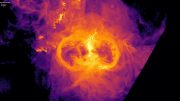
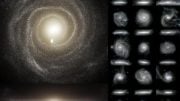
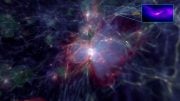



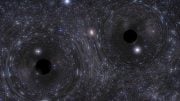
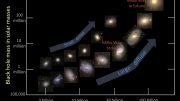
“Their findings suggest that small systems should merge into ever larger objects over billions of years.” And what about the trillion emergent galaxies arising for 14+ billion years? Did the simulation include an emergent process? The Illustris object classifications done by volunteers contained very few simulations that remotely looked like a galaxy. One bacteria can become a trillion in a few days. No merging there. That’s a lot of computing time wasted on someone’s bias agenda.